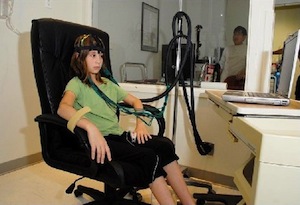TechEn’s CW6 system enables acquisition of data during studies in which motion and motor activities are essential, either to the study or to the disease itself. Among these are studies of Cerebral Palsy and of Parkinson’s Disease.
 |
| TechEn's CW6 technology is helping to advance studies of cerebral palsy and other diseases. |
Fenghua Tian of the University of Texas at Arlington have reported a study using CW6 to obtain new insights into Cerebral Palsy. Cerebral Palsy (CP) is the most common motor disorder of central origin in childhood, affecting at least two children per 1000 live births every year. Conventional neuroimaging techniques often require complete confinement and steadiness of the subject’s body, and therefore are extremely difficult to use with CP-affected patients. In contrast to these, functional near-infrared spectroscopy is robust to motion artifacts and has excellent potential as a sensitive diagnostic tool for this motor disorder.
By using the portable and patient-friendly CW6 system from TechEn, Tian and colleagues assessed the neural plasticity of pediatric CP patients during interventions, with an overall success rate of >80%. One of the aims of the study was to determine whether fNIRS can detect neural changes (plasticity) in CP patients during early childhood interventions. The CW6 system helped them achieve this, by greatly improving the success rate of imaging in a patient population with significant, spontaneous body movements.
Read more about our CW6 technology here.